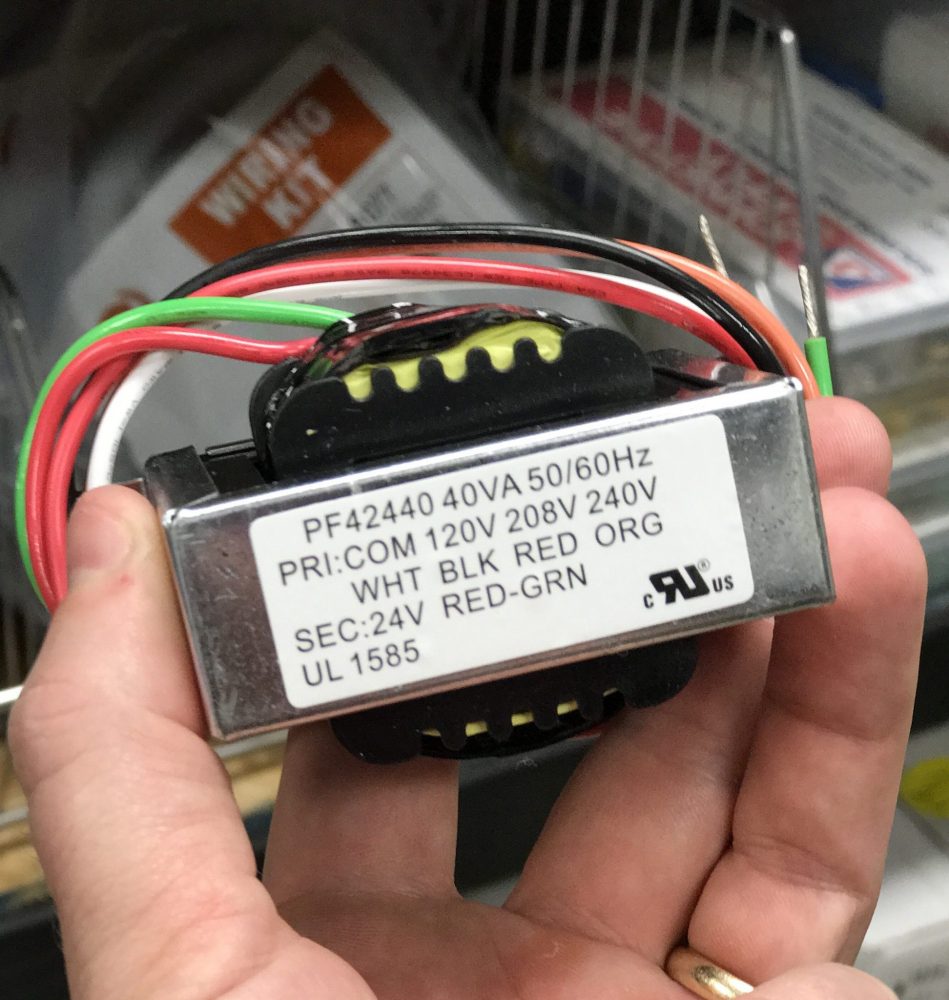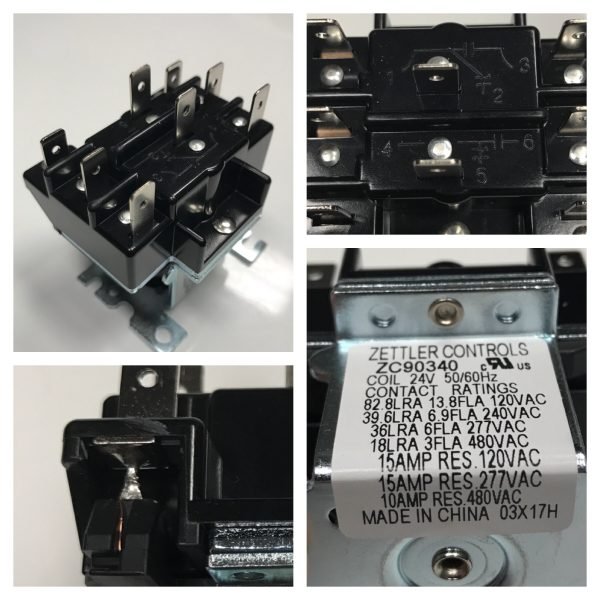Get Tech Tips
Subscribe to free tech tips.
The Troubleshooting Mindset
This article was written by Senior Refrigeration tech Jeremy Smith. Big thanks to Jeremy for his contributions to HVAC School and the tech community.

Having spent many years in the trade and many years reading posts from techs on forums and social media, a big issue that I see is that troubleshooting is something of a lost art.
Troubleshooting is where the rubber meets the road for a service technician. Nobody cares what certifications you have, what union you belong to, or anything else. If you can't find the problem and solve it in a timely fashion, your customer and employer are not going to be happy.
One of the things that I think most guys struggle with is the mental aspect of troubleshooting. I'll relate this in the form of a recent call I was sent on to “clean up.” It was a no-heat call in a small convenience store. Trane RTU on a zone sensor.
The tech called me and related that the unit had a call for heat at the unit, but the ignition sequence didn’t start. We talked a little about the problem, and he checked some limits and a few other things. He wound up ordering an ignition board and limit sensors. These were replaced late that night, and the unit still didn't work.
I was sent the next morning. Now, we get into the mental part of troubleshooting.
I met the tech so that he could communicate the basics of what he did. We talked for about 10 minutes before he went on to his job, and I went to have a chat with the trouble unit.
Twenty minutes later, I had the problem solved. I found a failed RTRM board. Now, you guys that do Trane all the time probably aren't surprised, but let's analyze what went wrong and how this could have been handled on a “one-stop” basis.
What did I do that the first tech didn't?
For starters, I took everything that I was told about the unit: what it was and wasn't doing and what everybody and their brother thought was wrong with it, and I threw it all out. I put it in a box in my head, closed the lid, and locked it.
I dug out the basic Trane “Service Facts” book, started the troubleshooting procedure from Step 1, and followed it to the end.
Now, I can make these arrogant claims about how I'm a Billy Badass service guy and how I'm more awesome than anyone else, but the simple fact is that I'm not. I do things a little differently and think a little differently than many others, and that sets me apart.
What did the first tech do wrong? While I'm not in his head, I think that he focused on why the heat didn't work instead of taking the unit AS A WHOLE and diagnosing it as a whole—kind of like the guy who can't figure out why the fridge is warm and spends an hour working on it only to find the plug pulled.
So, the mental aspect of troubleshooting cannot be ignored.
Start at the beginning, work the process and troubleshoot the entire system. Being willing to read the manufacturer's troubleshooting info isn't a newbie move; it shows maturity.
Work on the troubleshooting mindset. Don't be a parts changer.
—Jeremy
(Edited by Bryan Orr, any mistakes are my fault)










Comments
So, what book are you referencing? I listen to the podcasts. Thank you.
So, what book are you referencing? I listen to the podcasts. Thank you.
cialis prix cialis sans ordonnance or Cialis sans ordonnance pas cher
https://www.google.com.vn/url?q=https://tadalmed.com Acheter Cialis 20 mg pas cher
[url=https://maps.google.com.gi/url?sa=t&url=https://tadalmed.com]cialis generique[/url] Cialis sans ordonnance pas cher and [url=http://bbs.88moli.top/home.php?mod=space&uid=22577]Tadalafil sans ordonnance en ligne[/url] Tadalafil sans ordonnance en ligne
cialis prix cialis sans ordonnance or Cialis sans ordonnance pas cher
https://www.google.com.vn/url?q=https://tadalmed.com Acheter Cialis 20 mg pas cher
[url=https://maps.google.com.gi/url?sa=t&url=https://tadalmed.com]cialis generique[/url] Cialis sans ordonnance pas cher and [url=http://bbs.88moli.top/home.php?mod=space&uid=22577]Tadalafil sans ordonnance en ligne[/url] Tadalafil sans ordonnance en ligne
kamagra livraison 24h kamagra pas cher or kamagra gel
https://www.google.com.cy/url?sa=t&url=https://kamagraprix.shop kamagra gel
[url=https://images.google.vg/url?sa=t&url=https://kamagraprix.shop]Acheter Kamagra site fiable[/url] Kamagra pharmacie en ligne and [url=http://bocauvietnam.com/member.php?1640116-dmjnorwxwr]kamagra 100mg prix[/url] kamagra pas cher
kamagra livraison 24h kamagra pas cher or kamagra gel
https://www.google.com.cy/url?sa=t&url=https://kamagraprix.shop kamagra gel
[url=https://images.google.vg/url?sa=t&url=https://kamagraprix.shop]Acheter Kamagra site fiable[/url] Kamagra pharmacie en ligne and [url=http://bocauvietnam.com/member.php?1640116-dmjnorwxwr]kamagra 100mg prix[/url] kamagra pas cher
Acheter Cialis: cialis prix – cialis sans ordonnance tadalmed.shop
Acheter Cialis: cialis prix – cialis sans ordonnance tadalmed.shop
Kamagra pharmacie en ligne: Kamagra Oral Jelly pas cher – Kamagra Commander maintenant
Kamagra pharmacie en ligne: Kamagra Oral Jelly pas cher – Kamagra Commander maintenant
Tadalafil achat en ligne: Cialis generique prix – Cialis generique prix tadalmed.shop
Tadalafil achat en ligne: Cialis generique prix – Cialis generique prix tadalmed.shop
Cialis sans ordonnance 24h: Tadalafil sans ordonnance en ligne – Cialis sans ordonnance 24h tadalmed.shop
Cialis sans ordonnance 24h: Tadalafil sans ordonnance en ligne – Cialis sans ordonnance 24h tadalmed.shop
casino olympe: olympe – olympe
casino olympe: olympe – olympe
Nice job and on target.
I’d like to add that perhaps the 1st step in troubleshooting is recognition that it is our own ego which prevents cognitive, logical thinking. Particularly men, who seem to subconsciously fall into the roll of “road warrior.” Saviors of women, children, and the occasional damsel in distress!
The road warrior attacks the problem head-on, in the middle of the problem, where chaos abounds. When he gets stuck and confusion prevails, he attacks again with a bigger, better multi-meter, or maybe just his best guess.
As indicated in the article, the mature technician starts at the beginning, where order and logic can be found. He then the works through process one step at a time, while keeping a watchful eye on the entire system. When he gets stuck, he starts over again…from the beginning. With each repeat of the troubleshooting process, he cements his understanding of the sequence of operation, which brings him closer to the truth. I call this technician, the “wise warrior.”
Simply put: To start at the beginning, can only lead to the end. 🙂
Nice job and on target.
I’d like to add that perhaps the 1st step in troubleshooting is recognition that it is our own ego which prevents cognitive, logical thinking. Particularly men, who seem to subconsciously fall into the roll of “road warrior.” Saviors of women, children, and the occasional damsel in distress!
The road warrior attacks the problem head-on, in the middle of the problem, where chaos abounds. When he gets stuck and confusion prevails, he attacks again with a bigger, better multi-meter, or maybe just his best guess.
As indicated in the article, the mature technician starts at the beginning, where order and logic can be found. He then the works through process one step at a time, while keeping a watchful eye on the entire system. When he gets stuck, he starts over again…from the beginning. With each repeat of the troubleshooting process, he cements his understanding of the sequence of operation, which brings him closer to the truth. I call this technician, the “wise warrior.”
Simply put: To start at the beginning, can only lead to the end. 🙂
So True! Oh… and great first name
So True! Oh… and great first name
Kamagra Oral Jelly pas cher Kamagra Commander maintenant or Kamagra pharmacie en ligne
http://images.google.bf/url?q=https://kamagraprix.com Kamagra pharmacie en ligne
[url=https://www.google.com.tj/url?q=https://kamagraprix.com]kamagra livraison 24h[/url] kamagra en ligne and [url=http://www.carshowsociety.com/forum.php?action=profile;u=23399]Acheter Kamagra site fiable[/url] kamagra en ligne
Kamagra Oral Jelly pas cher Kamagra Commander maintenant or Kamagra pharmacie en ligne
http://images.google.bf/url?q=https://kamagraprix.com Kamagra pharmacie en ligne
[url=https://www.google.com.tj/url?q=https://kamagraprix.com]kamagra livraison 24h[/url] kamagra en ligne and [url=http://www.carshowsociety.com/forum.php?action=profile;u=23399]Acheter Kamagra site fiable[/url] kamagra en ligne
To leave a comment, you need to log in.
Log In